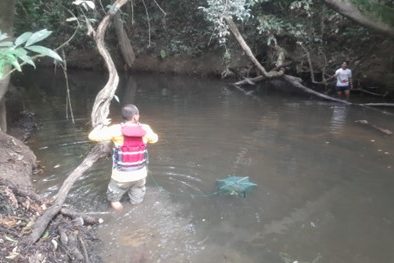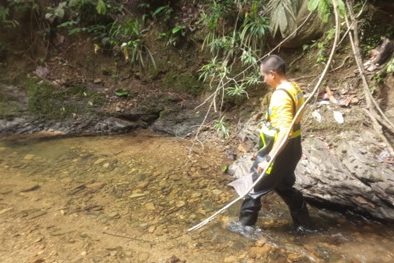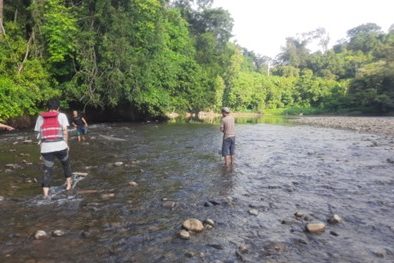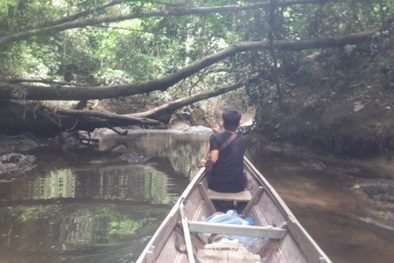After a successful research collaboration regarding the biodiversity and conservation status of aquatic biota, especially fish and crustaceans, in Lake Siran in East Kalimantan, between the Yayasan Konservasi Alam Nusantara (YKAN) and the lecturers of Animal Systematic Laboratory of Faculty of Biology UGM. This time, YKAN conducted another research on aquatic biota, especially fish and crustaceans, in Berau, East Kalimantan. This research again involved lecturers, students, and alumni from the Faculty of Biology UGM. The lecturers involved from the Animal Systematics Laboratory were Donan Satria Yudha, S.Si., M.Sc., and Dr. Rury Eprilurahman, S.Si., M.Sc. Meanwhile, the students involved were Muhamad Afnisa’a Rozaqi (undergraduate student) and Maula Haqul Dafa, S.Pd. (graduate student) as well as Hastin Ambar Asti, S.Si., M.Sc. (alumni of the Faculty of Biology UGM) and assisted by Mr. Susilo Irwanjasmoro from Wagleri Foundation. YKAN staff who participated in field sampling was Eka Cahyaningrum, S.Si. as Biodiversity and High Conservation Value Specialist and also alumni of the Faculty of Biology UGM, Mr. Purnomo and Mr. Lebin Yen.
This activity was carried out because of the landscape of the Kelay River being part of the Wehea-Kelay Essential Ecosystem Area, which covers an area of 532,000 hectares. The Wehea-Kelay landscape was one of the significant habitats for flora and fauna in Kalimantan. This area covers 2% of the forest area in Kalimantan, and served as home to at least 35% of Kalimantan’s mammals (including orangutans), 41% of birds, 20% of reptiles, and 46% of amphibians. In order to support the formation of a water conservation action plan for the waters of the Kelay River, YKAN needs to conduct a survey of the biodiversity of aquatic biota and understand the role of freshwater biota in the economic needs of the community.
The research was conducted for 7 days in the landscape of the Kelay River. The sampling area was divided into 3 main parts: the Main Kelay River, the Duhung River, and several tributaries flowing into the Kelay River. Active sampling of freshwater biota was conducted from morning until evening, while passive sampling used traps. The traps were set up in the morning and the catches were observed the following day. The data obtained consisted of 37 species of fish, 2 species of shrimp, and 3 species of crabs. The results of this activity still require further analysis to determine the biodiversity of freshwater biota and understand the commercially important fish and crustacean species and the catch quantities for their economic value.




